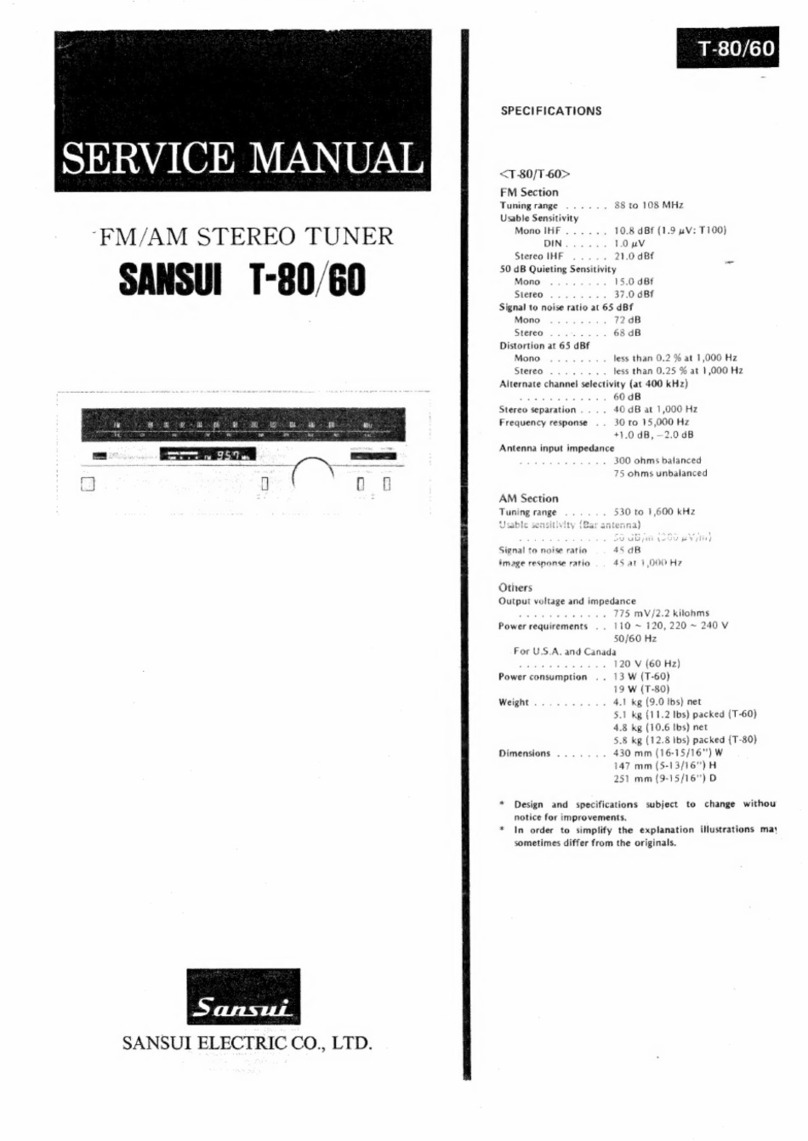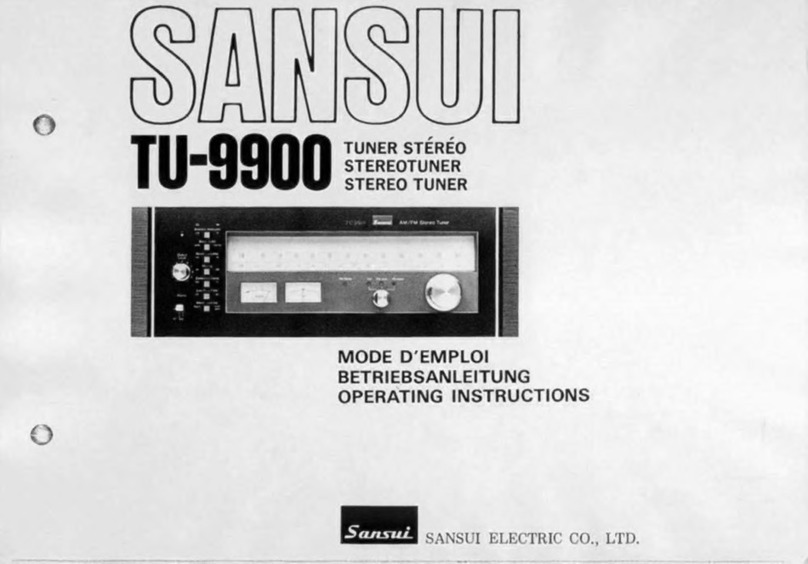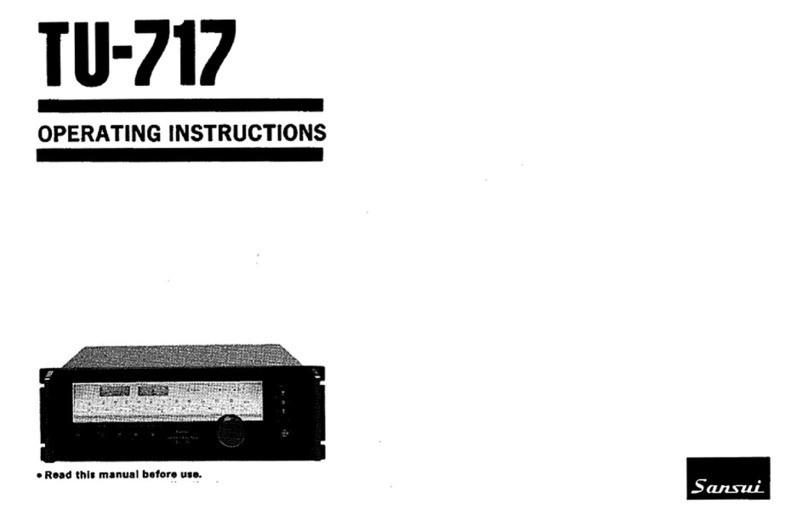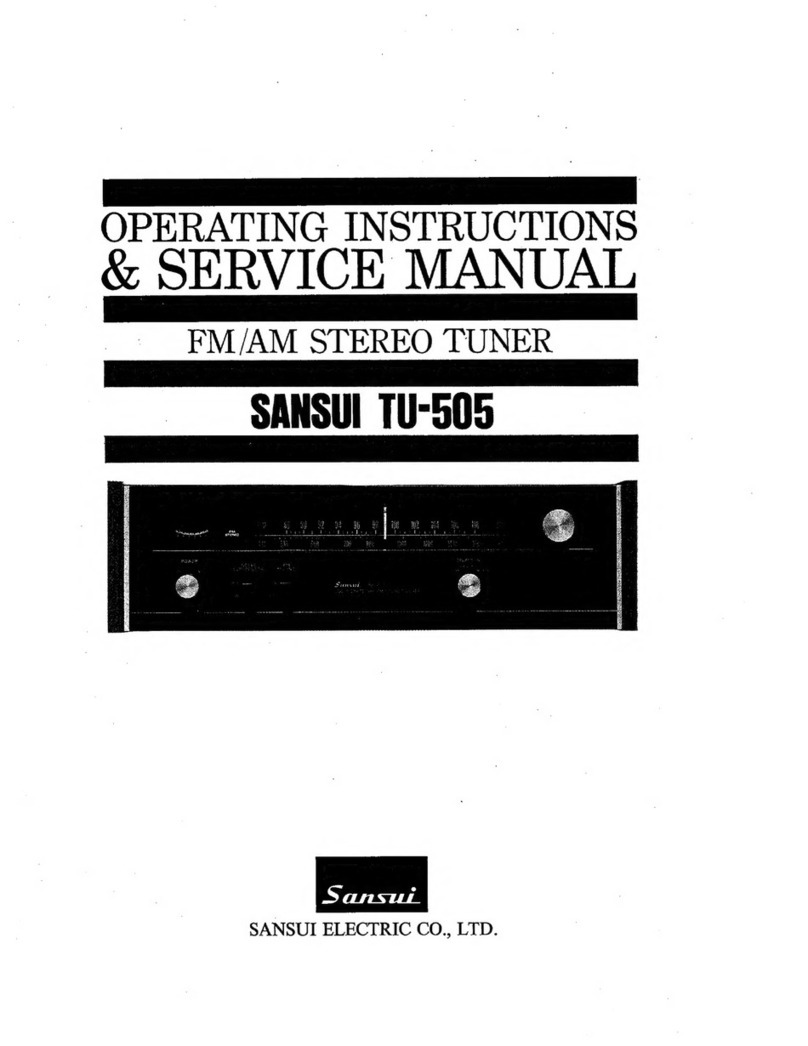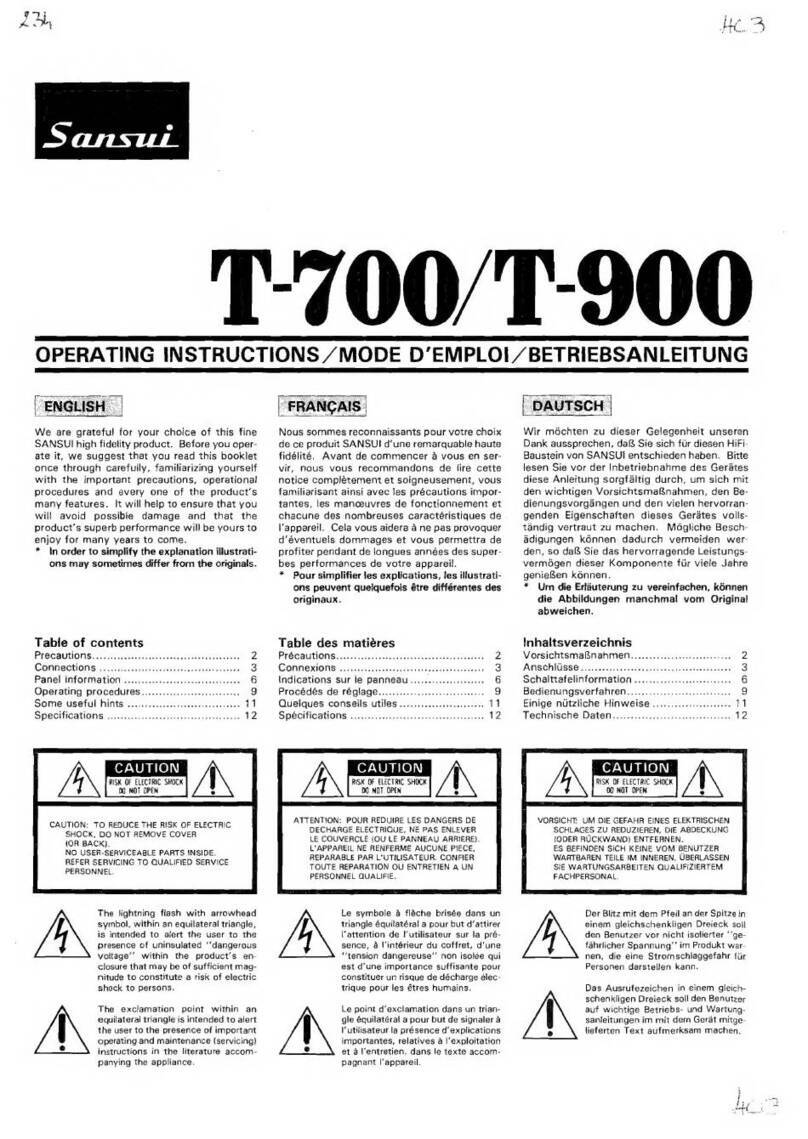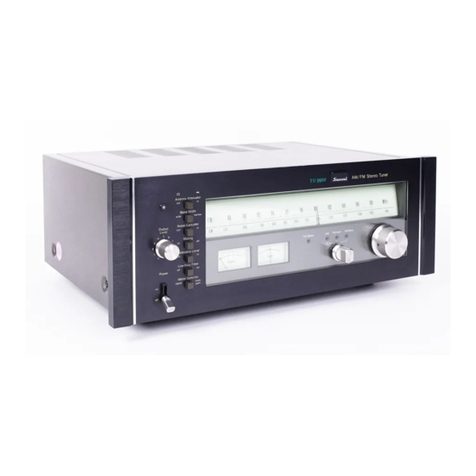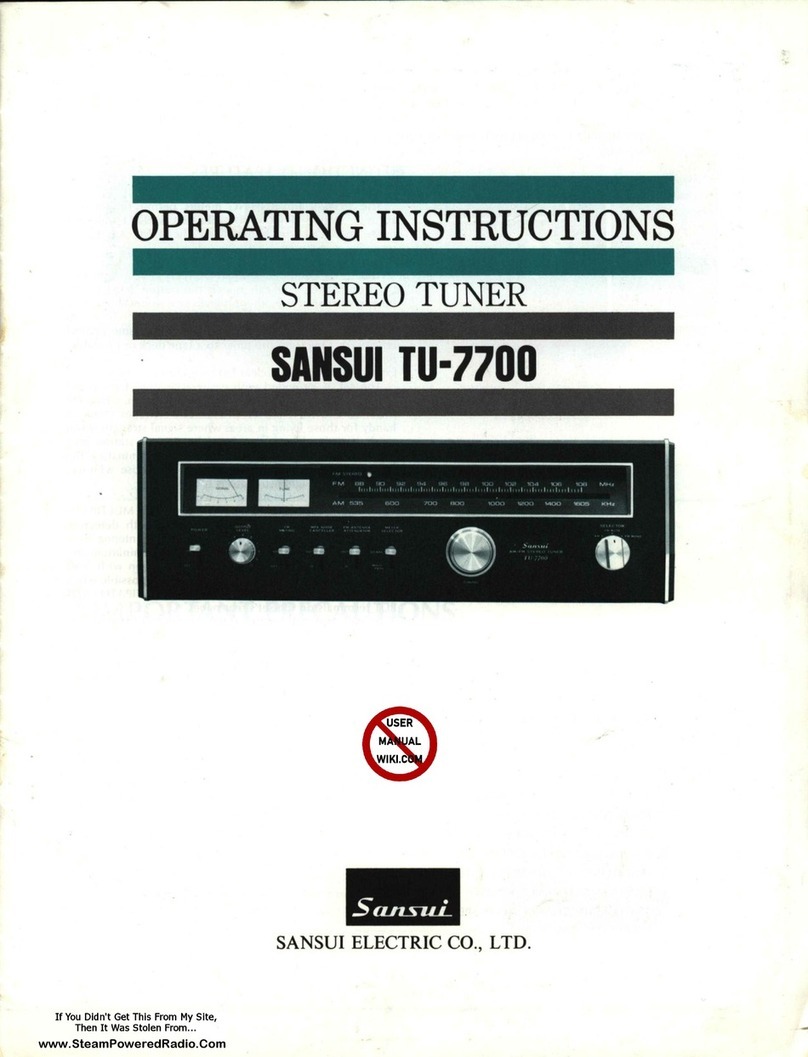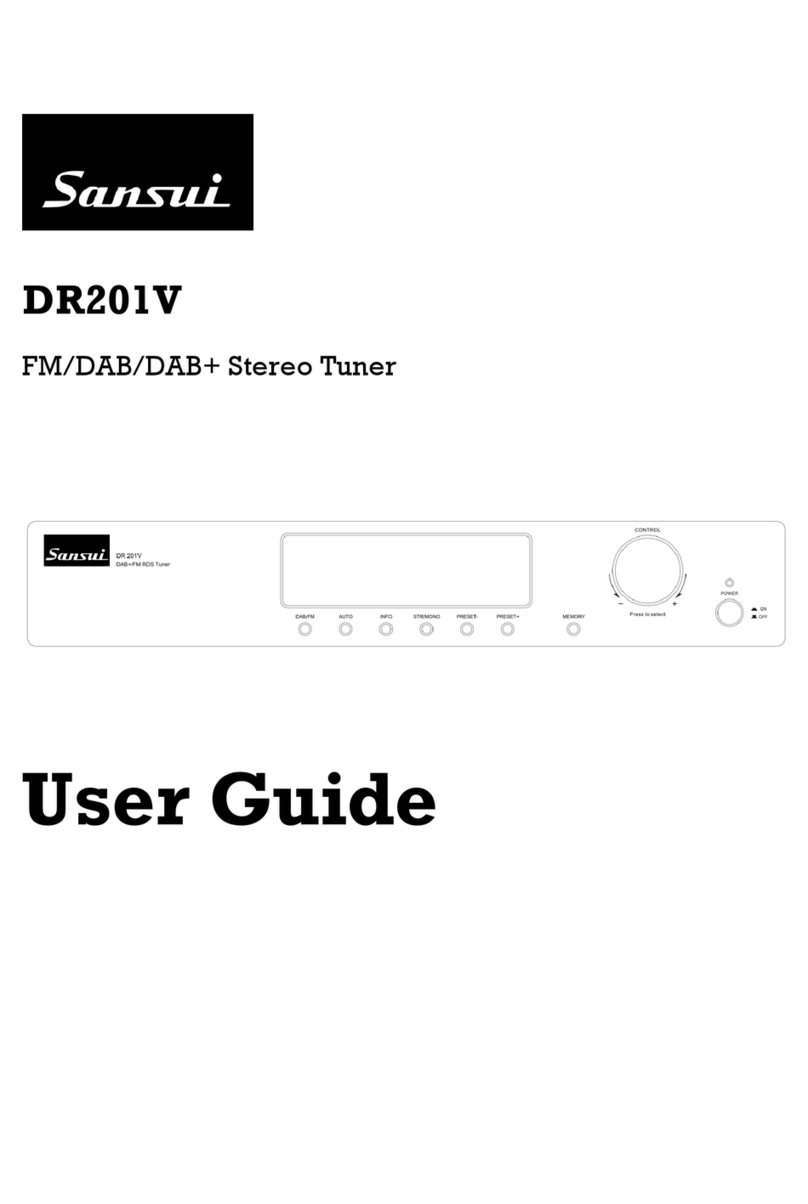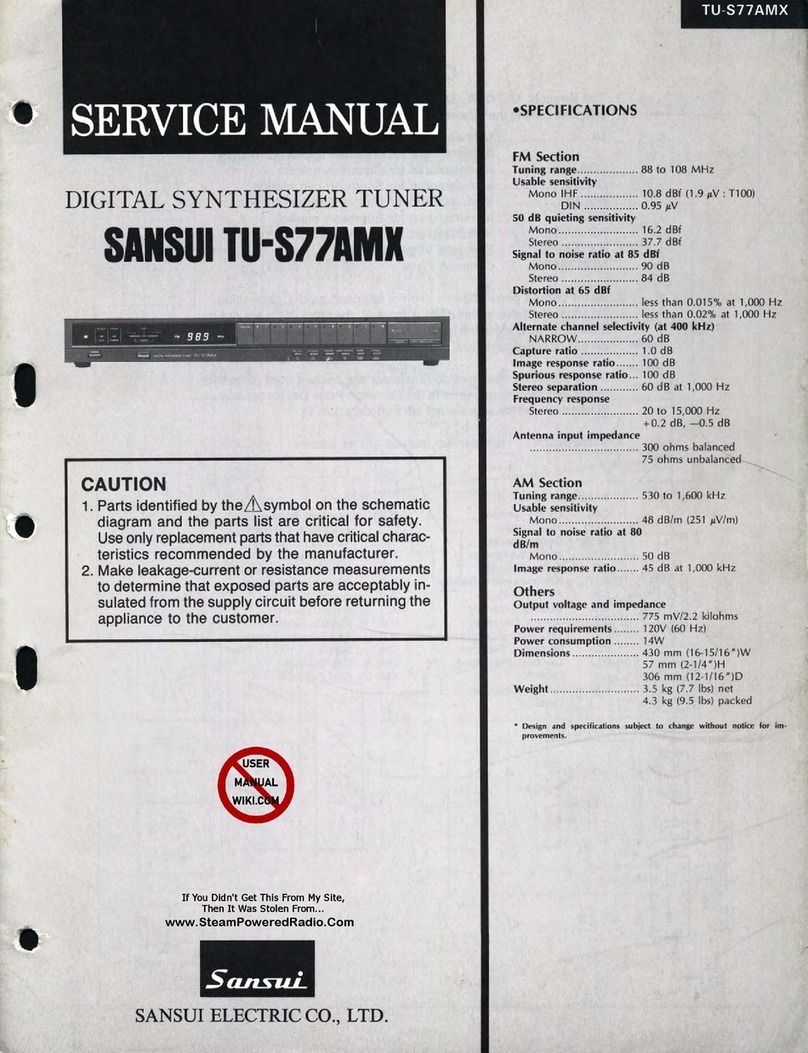
)
ANTENNA CONNECTION
t
The quality of reception that can be expected from
theTU-777 is largely dependent on the correct posi-
tioning and use of antennas. The following proce-
dures are recommended for noise-free reception.
Built,in AM Ferrite Bar Antenna
This sensitive antenna, located on the rear panel of
the tuner, is usuaily adequate for strong AM recep-
tion. To use, puli it down and away from the back
of the tuner until it comes to a stop halfway between
the top and the bottom of the tuner.
Outdoor AM Antenna
In ferroconcrete buildings or in areas remote from
the broadcasting station, the built-in ferrite bar
antenna may be inadequate for strong AM recep-
tion. An outdoor antenna then becomes necessary,
This can be accomplished by connecting the PVC
wire accompanying the tuner to the antenna termi-
nal marked AM-A on the back panel. Run this wire
to an antenna that has been installed outdoors and
away from the building. At the same time, the unit
should be grounded. Position the outdoor antenna
where reception is strongest while actually receiv-
ing a broadcast. And, for reasons of safety, be sure
to attach a lightning arrester to the outdoor an-
tenna.
FM Antenna
Where FM broadcasting stations are near and FM
signals are strong, satisfactory FM reception can be
obtained by using the feeder wire accompanying
the tuner. Connect the Íeeder wire to the antenna
terminals marked FM-AI and FM-Az on the rear
panel, then fully extend the wire to a T shape and
fix it to a wall or ceiling where it aliows the strong-
est reception.
If the TU-777 is used in a thick-walled building or
in an area remote from FM broadcasting stations,
the indoor feeder wire antenna may be inadequate
for strong signal reception. An outdoor antenna
clesigne<i exclusively for FM reception should then
)
-6-
FM antennas of the 300 ohm balanced type and 75
ohm unbalanced type can be used with theTU'777.
Connect either antenna to the matching antenna
terminals on the rear of the tuner. The 300 ohm
feeder wire should be connected to the FM antenna
terminals A.1 and Az as in Fig. 1.
If a 75 ohm coaxial cable is used, connect the con-
ductor to the FM antenna terminal A, and the
shielding wire to the terminal G as in trig. 4.
NOTE: FM sensitivity cannot be raised simply by
lengthening the antenna. Adjust the antenna's
height and direction while actually listening to a
broadcast for the best reception.
AMPLIFIER CONNECTION
The TU-777 has been provided with two cords for
quick and convenient connection to an amplifier.
One is marked L and corresponds to the left stereo
channel, the other is marked R and corresponds to
the right. If the TU-777 isto be used with Sansui's
matching AU-777 amplifier or any other Sansui
amplifier, insert the pin plugs of each cord into the
amplifier inputs labeled TUNER or AUX respec-
tively. Be sure in either case, that cord L is insert-
ed into the left input and R is inserted into the right
input. If the TU-777 is to be used with an ampli-
6er other than Sansui, the same procedures general-
ly hold true, but it is best to check the manufac-
turer's instructions to be sure.
